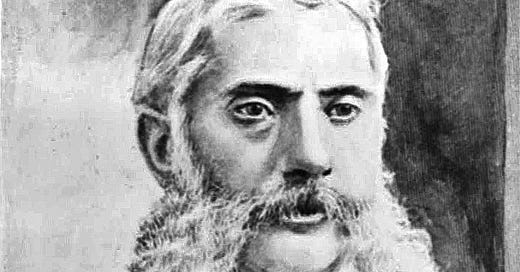How Guggenheim Family Obtained Its Wealth Historically--Revisited (Part 1)
"In 1881, Meyer Guggenheim..bought a one-third interest for $5,000 in two lead and silver mines in Colorado...Armed state militias and hired thugs were used as needed by the Guggenheim family.."
The Guggenheim family obtained its wealth in the late 1800s and early 1900s by owning mines and smelters, utilizing cheap labor and making windfall profits from the lifting, refining and marketing of metals during World War I.
In 1881, Meyer Guggenheim had bought a one-third interest for $5,000 in two lead and silver mines in Colorado. Within a year, there was a rich strike of silver and $17,000 per month was now being earned from the labor of the miners who spent 12 hours a day digging up the Guggenheim family’s silver.
Throughout the 1880s, armed state militias and hired thugs were used as needed by the Guggenheim family to break the frequent strikes of miners in its Colorado mines. But by 1888, Meyer Guggenheim was earning $750,000 [equal to around $24 million in 2023] per year from his two lead and silver mines. Eventually, the Guggenheim family earned $15 million from its initial $5,000 investment before the two mines were exhausted of their silver deposits.
To increase family profits, Meyer Guggenheim formed the Philadelphia Smelting & Refining Company and built a smelter in Pueblo, Colorado to refine the silver from his mines. After armed strikebreakers were used by Meyer to crush a strike of smelter workers, the Guggenheim family moved from Philadelphia to New York City in 1889. Armed force was also used to evict miners who squatted on claims owned by the Guggenheims in Colorado.
In the 1890s, the Guggenheim family began to do business in Mexico. After agreement was reached with a pliant Mexican government, the Guggenheims built a smelter in Monterrey, Mexico in which “thugs” were “employed to herd the peons into the blazing smelter at gunpoint,” according to the book The Guggenheims 1848-1988: An American Epic by John Davis. Because Mexican labor was even cheaper than Colorado labor in the 1890s, the Guggenheim family’s Monterrey, Mexico smelter was much more profitable than its Pueblo, Colorado smelter.
Another Mexican subsidiary company was formed by the Guggenheim family to operate its Tepezala copper mines and its Aguascalientes smelter in Mexico. By 1895, from its Colorado and Mexican smelters alone, the Guggenheim family was earning a net profit exceeding $1 million [equal to around $36 million in 2023] a year and had become economically and politically powerful in Mexico. Another new family company, “Guggenex,” was the nickname for the Guggenheim Exploration Company, which was formed to explore the whole globe for potentially lucrative mines from which to lift minerals.
In the 1890s, Meyer Guggenheim also began to play the stock market and his family began to buy stock in the Rockefeller-owned American Smelting & Refining Company [ASARCO]. ASARCO was a trust of 23 smelter operators, developed to give Rockefeller interests control of all U.S. underground mineral resources. As a result of its ASARCO stock purchases and crafty maneuvering, the Guggenheim family was able to gain a 51-percent-controlling interest in what was originally intended to be just another Rockefeller-controlled monopoly.
By the early 1900s, the Guggenheim family controlled the mining and the smelting industry in the United States. In 1905, Meyer Guggenheim died, leaving an estate of $2.3 million [equivalent to over $79 million in 2023 U.S. dollars]. But prior to his death, Meyer Guggenheim had already transferred most of his wealth to the next generation of seven Guggenheim sons, so that each one could be a multi-millionaire before Meyer Guggenheim died. [end of part 1]



